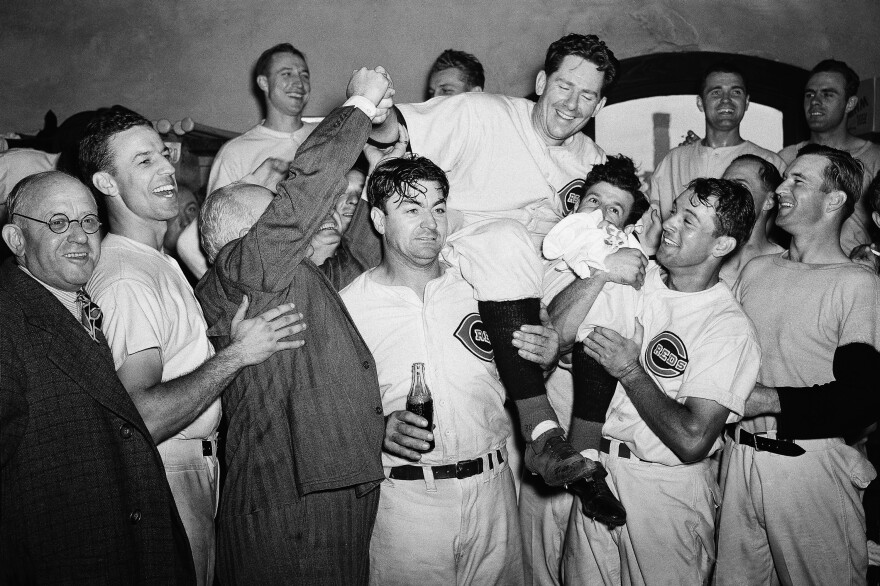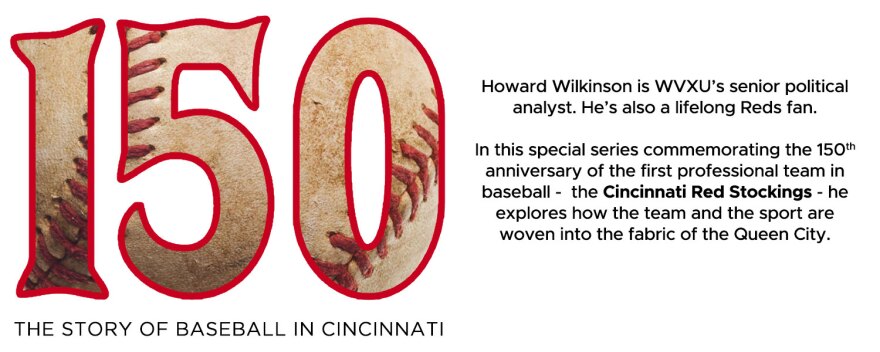The Cincinnati Reds franchise had been carrying an albatross around its neck for 20 years by the time the Reds returned to the World Series in 1939 to take on the New York Yankees.
No one believed the Reds could win a World Series fair and square.
Since 1919, the Reds had been living with the aftermath of the "Black Sox scandal," in which eight Chicago White Sox players were accused of conspiring with big-time gamblers to throw the World Series to the Reds.
A criminal investigation resulted in a trial of the "Black Sox" in which they were somehow acquitted, even though they had confessed.
That wasn't good enough for the first commissioner of baseball. The somber and stern Kenesaw Mountain Landis – born in Millville, Ohio, in Butler County – was not the forgiving sort, and he used his power as commissioner to ban the eight White Sox from baseball forever.
So, the Reds went down in the history books as the winners of the 1919 World Series, although the victory was a tainted one. Did they win because some White Sox players threw games? Or were they just a better team?
The debate has gone on in baseball history circles ever since, with books and movies produced on the subject of the "Black Sox."
The Reds had a "Cinderella season" in 1939, winning the National League pennant only two years after finishing last in the league.
The 1939 National League pennant gave them a ticket to the World Series and a chance for redemption – even though the Reds of 1939 were mostly little children in 1919 and had no personal recollection of that World Series.
The Reds had the two winningest pitchers in baseball – Bucky Walters with 27 wins and Paul Derringer with 25. The two of them help carry the Reds to the NL pennant, but they couldn't lift their club past the American League champions, the New York Yankees.

The Yankees swept the Reds in a four-game series, with their young superstar, Joe DiMaggio, who hit .381 that year and won his second American League Most Valuable Player award.
In the 10th inning of the final game, the futility of the Reds was on display in one famous play involving future Hall of Famer Ernie Lombardi, known as "Shnoz" for his prominent nose.
The Yankees' Charlie "King Kong" Keller scored when he and the ball both collided with Lombardi at home plate. DiMaggio also scored while Lombardi, rolling on the ground, tried to find the ball. It became known as "Lombardi's Snooze." What most people did not know was that Lombardi was on the ground because he had been hit hard in the groin.
It was a bitter disappointment for the Reds, still looking for redemption, and still chafing at being called a team that couldn't win the big ones.
But 1940 would be a different kettle of fish for the Redlegs.
Manager Bill McKechnie, with most of the same cast of characters he had in 1939, led the club to a National League pennant with 100 wins and a 12-game lead in the pennant race.
And, on the American League side, the Yankees dominance ended when they finished in third place behind the Detroit Tigers, who won the AL pennant with a powerful lineup.
For the Reds, it was a bittersweet victory in the NL.
In early August, their back-up catcher Willard Hershberger committed suicide in his Boston hotel room.
Hershberger had blamed himself for losses to the New York Giants and the Boston Bees, telling a teammate that if Lombardi had been behind the plate, the Reds would have won those games.
The next day, after failing to show up for a double-header with the Bees, McKechnie sent a friend of Hershberger's to the hotel to check on him. He found the door locked. He asked a hotel employee to open it; and the friend, Dan Cohen, found Hershberger by the bathtub, with his throat slit.
The team was in shock. They retired his number 5 for the rest of the season. (Many years later that number was retired permanently in honor of Johnny Bench.)
Lombardi had been dealing with nagging injuries all season, and the Reds needed someone to share the World Series catching duties. Jimmie Wilson, a 40-year-old coach, was added to the roster as a catcher and appeared in six of the seven games, hitting .353.
Tragedy struck the Tigers as well.
Pitcher Bobo Newsom's father had come to Cincinnati from South Carolina to watch his son pitch. Newsom's father died in the hotel room the day before the series began, but Newsom – Detroit's Game 1 starter – pitched brilliantly in his grief and the Tigers took the first game 7-2 at Crosley Field.
With ace Bucky Walters on the mound, the Reds won Game 2 at Crosley Field.
The scene shifted to Detroit for games 3, 4 and 5. There were no "travel days" built into the schedule; the two teams played seven games in seven days, traveling back and forth from Cincinnati and Detroit by train.
The series went back and forth, with the Tigers winning the third game and the Reds taking the fourth.
In Game 5, Newsome went back to the mound and threw an 8-0 shutout win over the Reds, before the teams boarded the train for the trip back to Cincinnati.
Game 6 before 30,481 fans at Crosley Field was a 4-0 shutout win for the Reds' Walters. Ironically, one of the Tigers' relief pitchers that day was Fred Hutchinson, who later managed the Reds from 1959 until he died of cancer in 1964. In 1961, Hutchinson led another "Cinderella" Reds team to the World Series, where they lost in five games to the Yankees.
Game 7 was a pitching duel between Newsome and Reds' starter Paul Derringer, both of whom went all the way.
The Reds went ahead to stay in the seventh inning on a sacrifice fly by shortstop Billy Myers. Derringer shut the Tigers down in the final innings and, when the 27th out was made, a ground-out by future Hall of Famer Earl Averill, the players rushed out on to the field to celebrate, while 26,854 fans did the same in the Crosley Field box seats and grandstands.

By late afternoon, the celebration had spilled out into the streets of downtown. Thousands of revelers packed Fountain Square. Some rowdies overturned a streetcar.
The hoopla went on until the wee hours of the next morning.
The Redlegs had slipped free of that albatross at long last.




